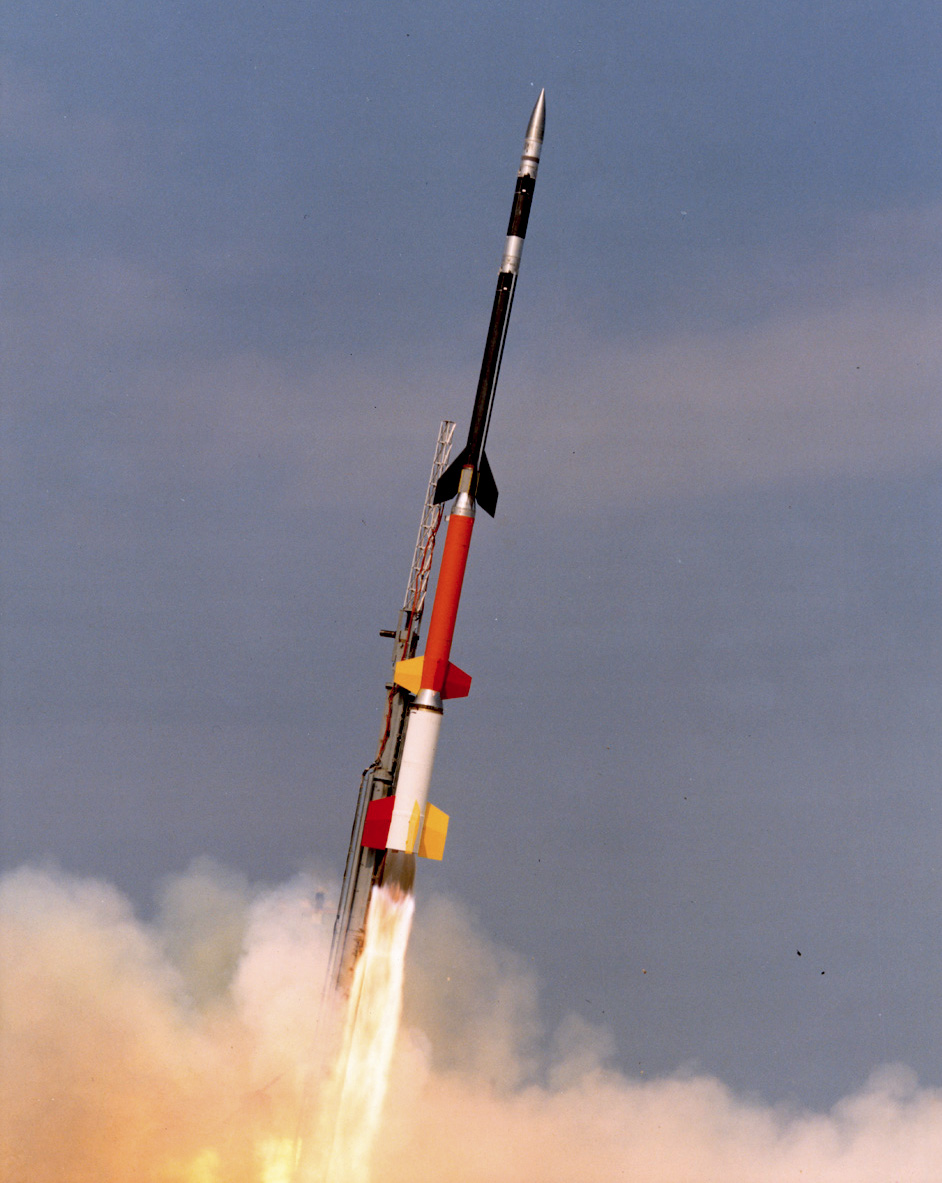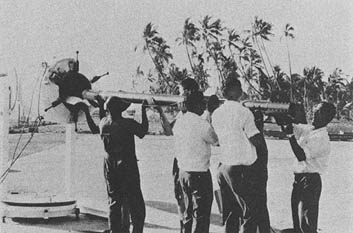|
Vikram-S
Vikram-S is India's first privately built rocket. Its maiden flight lifted on 18 November 2022 at 11 A.M. from Sounding Rocket Complex, Sriharikota. The rocket was designed and developed by Skyroot Aerospace. History Vikram-S, India's first privately built rocket was launched on 18 November 2022 by Skyroot Aerospace from Sriharikota. The first mission of the rocket launch has been designated as 'Prarambh', meaning beginning. As a tribute the rocket has been named after Vikram Sarabhai, who is considered as the father of India's space programme. Rocket Vikram-S rocket is developed by Skyroot Aerospace and the launch was assisted by ISRO and IN-SPACe (Indian National Space Promotion and Authorisation Centre). The rocket reached an apogee of 89.5km. Launch history See also * Agnibaan-SOrTeD * Vikram (rocket) * Skyroot Aerospace * Bellatrix Aerospace * Indian Space Research Organisation The Indian Space Research Organisation (ISRO; ) is the national space agency ... [...More Info...] [...Related Items...] OR: [Wikipedia] [Google] [Baidu] |
Vikram (rocket)
The Vikram (Sanskrit: ', ; Namesake: Vikram Sarabhai) is a family of small-lift launch vehicles being developed by Skyroot Aerospace, an Indian startup aerospace company. Before a full orbital launch, a suborbital flight of rocket designated "Vikram-S" was performed on 18 November 2022 by the name of mission ''Prarambh'' (). Overview Skyroot Aerospace has successfully tested Vikram S, the sounding rocket. Vikram I is currently under development while the heavier launchers of Vikram II and Vikram III are proposed. Vikram I The Vikram I, first rocket in the series, has three solid fuel-powered stages each with a burn time ranging between 80 and 100 seconds and the final stage is Raman engine. The Raman engine is powered by MMH and NTO liquid fuels in a cluster of four engines that generate 3.4 kN thrust. These Raman Engines will be used to do final adjustments in the orbit of the stage. Vikram I is designed to lift 290 kg to a 500 km Sun synchronous polar ... [...More Info...] [...Related Items...] OR: [Wikipedia] [Google] [Baidu] |
Skyroot Aerospace
Skyroot Aerospace Private Limited is an Indian private aerospace manufacturer and commercial launch service provider headquartered in Hyderabad. The company was founded by former engineers and scientists from ISRO. It aims to develop and launch its own series of small lift launch vehicles especially crafted for the small satellite market. Sky root is the first Indian rocket launching private company History Skyroot Aerospace was formed in July 2018 by former Indian Space Research Organisation scientists Pawan Kumar Chandana, Naga Bharath Daka through the support of Vasudevan Gnanagandhi as well as a small group of entrepreneurs including CureFit founders Mukesh Bansal and Ankit Nagor. Skyroot has initially raised million, including from space and defence contractor Solar Industries. The company has been developing its first launch vehicle, the "Vikram 1," which is on track for its initial launch around the end of 2022. On 6 October 2020, the National Startup Awards 2020 ... [...More Info...] [...Related Items...] OR: [Wikipedia] [Google] [Baidu] |
Agnibaan SOrTeD
Agnibaan ''SOrTeD'' (short form of ''SubOrbital Technological Demonstrator'') is a suborbital technological demonstrator of the Agnibaan launch vehicle, manufactured by Indian space startup Agnikul Cosmos. Description The SOrTeD mission is a single-stage launch vehicle demonstration that is powered by a semi-cryogenic engine called the Agnilet. The 6.2 meter-tall vehicle has an elliptical nose cone at the top to protect the package from harsh conditions during the flight. Unlike traditional sounding rockets that typically launch from guide rails, Agnibaan SOrTeD lifts off vertically and follows a predetermined trajectory while executing a precisely coordinated series of maneuvers during flight. This innovative approach sets Agnibaan apart and highlights the advanced technology and capabilities employed by Agnikul Cosmos for its maiden sub-orbital flight. For Flight control the vehicle is equipped with four carbon composite fins to provide passive control. Agnikul has said ... [...More Info...] [...Related Items...] OR: [Wikipedia] [Google] [Baidu] |
Vikram Sarabhai
Vikram Ambalal Sarabhai (12 August 1919 – 30 December 1971) was an Indian physicist and astronomer who initiated space research and helped develop nuclear power in India. He was honoured with Padma Bhushan in 1966 and the Padma Vibhushan (posthumously) in 1972. He is internationally regarded as the Father of the Indian Space Program. Personal life Son of Ambalal Sarabhai, he came from the famous Sarabhai family from India who were major industrialists committed to the Indian independence movement. Vikram Sarabhai married the classical dancer Mrinalini in 1942. The couple had two children. His daughter Mallika gained prominence as an actress and activist, and his son Kartikeya too became an active person in science. During his lifetime, he practiced Jainism. He attended Gujarat College, Ahmedabad, but later moved to the University of Cambridge, England, where he took his tripos in natural sciences in 1940. In 1945 he returned to Cambridge to pursue PhD and wrote a ... [...More Info...] [...Related Items...] OR: [Wikipedia] [Google] [Baidu] |
Sounding Rocket
A sounding rocket or rocketsonde, sometimes called a research rocket or a suborbital rocket, is an instrument-carrying rocket designed to take measurements and perform scientific experiments during its sub-orbital flight. The rockets are used to launch instruments from 48 to 145 km (30 to 90 miles) above the surface of the Earth, the altitude generally between weather balloons and satellites; the maximum altitude for balloons is about 40 km (25 miles) and the minimum for satellites is approximately 121 km (75 miles). Certain sounding rockets have an apogee between 1,000 and 1,500 km (620 and 930 miles), such as the Black Brant X and XII, which is the maximum apogee of their class. Sounding rockets often use military surplus rocket motors. NASA routinely flies the Terrier Mk 70 boosted Improved Orion, lifting 270–450-kg (600–1,000-pound) payloads into the exoatmospheric region between 97 and 201 km (60 and 125 miles). Etymology The origin of the term ... [...More Info...] [...Related Items...] OR: [Wikipedia] [Google] [Baidu] |
Space Industry Of India
India's Space Industry is predominantly driven by the national Indian Space Research Organisation (ISRO). The industry includes over 500 private suppliers and other various bodies of the Department of Space in all commercial, research and arbitrary regards. There are relatively few independent private agencies, though they have been gaining an increased role since the start of the 21st century. In 2019, the space industry of India accounted for $7 billion or 2% of the global space industry and employed more than 45,000 people. Antrix Corporation expects the industry to grow up to $50 billion by 2024 if provided with appropriate policy support. In 2021, the Government of India launched the Indian Space Association (ISpA) to open the Indian space industry to private sectors and start-ups. Several private companies like Larsen & Toubro, Nelco (Tata Group), OneWeb, MapmyIndia, Walchandnagar Industries are founding members of this organisation. Lieutenant General Anil Kumar Bhatt ... [...More Info...] [...Related Items...] OR: [Wikipedia] [Google] [Baidu] |
Launch Vehicle
A launch vehicle or carrier rocket is a rocket designed to carry a payload (spacecraft or satellites) from the Earth's surface to outer space. Most launch vehicles operate from a launch pads, supported by a launch control center and systems such as vehicle assembly and fueling. Launch vehicles are engineered with advanced aerodynamics and technologies, which contribute to large operating costs. An orbital launch vehicle must lift its payload at least to the boundary of space, approximately and accelerate it to a horizontal velocity of at least . Suborbital vehicles launch their payloads to lower velocity or are launched at elevation angles greater than horizontal. Practical orbital launch vehicles are multistage rockets which use chemical propellants such as solid fuel, liquid hydrogen, kerosene, liquid oxygen, or Hypergolic propellants. Launch vehicles are classified by their orbital payload capacity, ranging from small-, medium-, heavy- to super-heavy lift ... [...More Info...] [...Related Items...] OR: [Wikipedia] [Google] [Baidu] |
Small-lift Launch Vehicle
A small-lift launch vehicle is a rocket orbital launch vehicle that is capable of lifting or less (by NASA classification) or under (by Roscosmos classification) of payload into low Earth orbit (LEO). The next larger category consists of medium-lift launch vehicles.50t payloads" The first small-lift launch vehicle was the Sputnik rocket, launched by the Soviet Union, which was derived from the R-7 Semyorka ICBM. On 4 October 1957, the Sputnik rocket was used to perform the world's first satellite launch, placing the Sputnik 1 satellite into a low Earth orbit. NASA responded by attempting to launch the Vanguard rocket. However, the Vanguard TV3 launch attempt failed, with the 31 January 1958 launch of the Explorer 1 satellite using the Juno I rocket being the first successful NASA orbital launch. The Vanguard I mission was the second successful NASA orbital launch. This was the start of the space race. [...More Info...] [...Related Items...] OR: [Wikipedia] [Google] [Baidu] |
Indian Space Research Organisation
The Indian Space Research Organisation (ISRO; ) is the national space agency of India, headquartered in Bengaluru. It operates under the Department of Space (DOS) which is directly overseen by the Prime Minister of India, while the Chairman of ISRO acts as the executive of DOS as well. ISRO is India's primary agency for performing tasks related to space-based applications, space exploration and the development of related technologies. It is one of six government space agencies in the world which possess full launch capabilities, deploy cryogenic engines, launch extraterrestrial missions and operate large fleets of artificial satellites. The Indian National Committee for Space Research (INCOSPAR) was established by Jawaharlal Nehru under the Department of Atomic Energy (DAE) in 1962, on the urging of scientist Vikram Sarabhai, recognising the need in space research. INCOSPAR grew and became ISRO in 1969, within DAE. In 1972, the government of India set up a Space Commission a ... [...More Info...] [...Related Items...] OR: [Wikipedia] [Google] [Baidu] |
Bellatrix Aerospace
Bellatrix Aerospace, is an Indian private aerospace manufacturer and small satellite company, headquartered in Bangalore, India. The company was established in 2015. It plans to launch its own rocket named Chetak in 2023. The two-stage Chetak rocket is powered by a number of their own Aeon engines. The Chetak rocket will use liquid methane as fuel. In 2019 it announced plans to use water as propellant for an electric propulsion system. On 8 February 2021 they announced that they partnered with Skyroot Aerospace. On 9 February 2022, Rohan announced on Twitter that Bellatrix has stopped work on its rocket. In June 2022, the company raised $8 million in a Series A funding round to pursue the development of in-space propulsion systems. See also * Comparison of orbital launch systems * Indian Space Research Organisation * New Space India Limited * Pixxel * Satellize * List of private spaceflight companies * Skyroot Aerospace Skyroot Aerospace Private Limited is an Indian ... [...More Info...] [...Related Items...] OR: [Wikipedia] [Google] [Baidu] |
Coordinated Universal Time
Coordinated Universal Time or UTC is the primary time standard by which the world regulates clocks and time. It is within about one second of mean solar time (such as UT1) at 0° longitude (at the IERS Reference Meridian as the currently used prime meridian) and is not adjusted for daylight saving time. It is effectively a successor to Greenwich Mean Time (GMT). The coordination of time and frequency transmissions around the world began on 1 January 1960. UTC was first officially adopted as CCIR Recommendation 374, ''Standard-Frequency and Time-Signal Emissions'', in 1963, but the official abbreviation of UTC and the official English name of Coordinated Universal Time (along with the French equivalent) were not adopted until 1967. The system has been adjusted several times, including a brief period during which the time-coordination radio signals broadcast both UTC and "Stepped Atomic Time (SAT)" before a new UTC was adopted in 1970 and implemented in 1972. This change ... [...More Info...] [...Related Items...] OR: [Wikipedia] [Google] [Baidu] |






